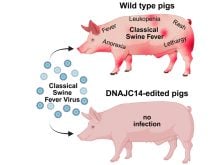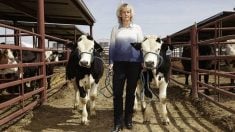Saskatchewan farmers will have to wait for details of this year’s provincial crop insurance program, but they should prepare themselves to pay higher premiums.
Agriculture minister Clay Serby said last week he is waiting for cabinet approval of his decision to sign the new federal farm policy package before making an announcement.
That is expected to happen by March 11. The province can’t afford to go it alone on a crop insurance program. It expects to put $100 million into the program along with $150 million from Ottawa.
Read Also

Organic farmers urged to make better use of trade deals
Organic growers should be singing CUSMA’s praises, according to the Canadian Chamber of Commerce.
“Unless I sign the agreement, I won’t get the money,” Serby said in an interview.
Alberta and Manitoba have already announced what their crop insurance programs will look like for 2003. Serby said he hopes Saskatchewan’s announcement will be made by mid-month.
The government has been warning farmers for months that premiums will have to go up.
Saskatchewan Crop Insurance Corp. is about $500 million in the red after back-to-back droughts.
“This is a large debt in crop insurance that we’ll need to retire over time,” Serby said.
“Our premiums will need to reflect what that is.”
Under the agricultural policy framework, producers will have to pay 40 percent of the total crop insurance premium cost. Right now, they pay about 37 percent, while Ottawa pays 28 percent and the province pays 35 percent.
Serby said he wants to keep the producer share at 37 percent overall if he can. Individual farmers, however, will see their premiums rise significantly, particularly for oilseeds.
On the brighter side, crop insurance prices were set in December when markets were stronger than they are now.
“This does advantage the farmer if he has a loss,” Serby said. “In some cases a disaster on the farm would result in a far larger payout than he would get from the marketplace.”
As of the end of February, crop insurance had paid out slightly more than $1 billion, which is the largest payout in the corporation’s history. That number includes claims for yield loss, waterfowl and big game damage, establishment benefits and unseeded acreage benefits.
Crop insurance spokesperson Gloria Visser-Niven said the corporation’s total liabilities were $2.5 billion.
“So we’re paying out about 40 percent of it,” she said.
In 1988, the corporation also paid out 40 percent of its liabilities, but there weren’t as many acres insured and not as much total liability.















